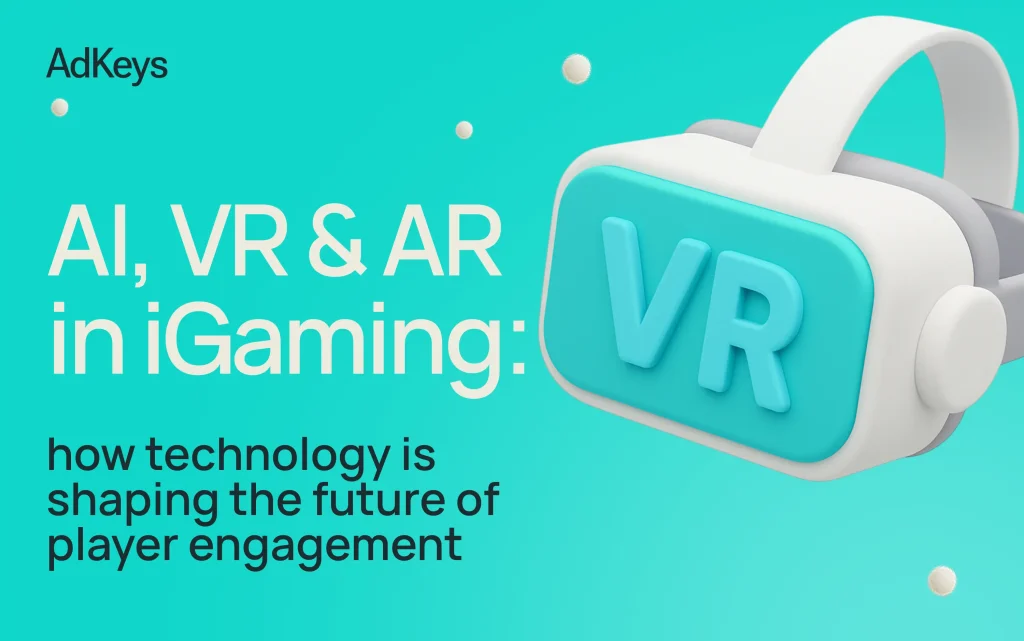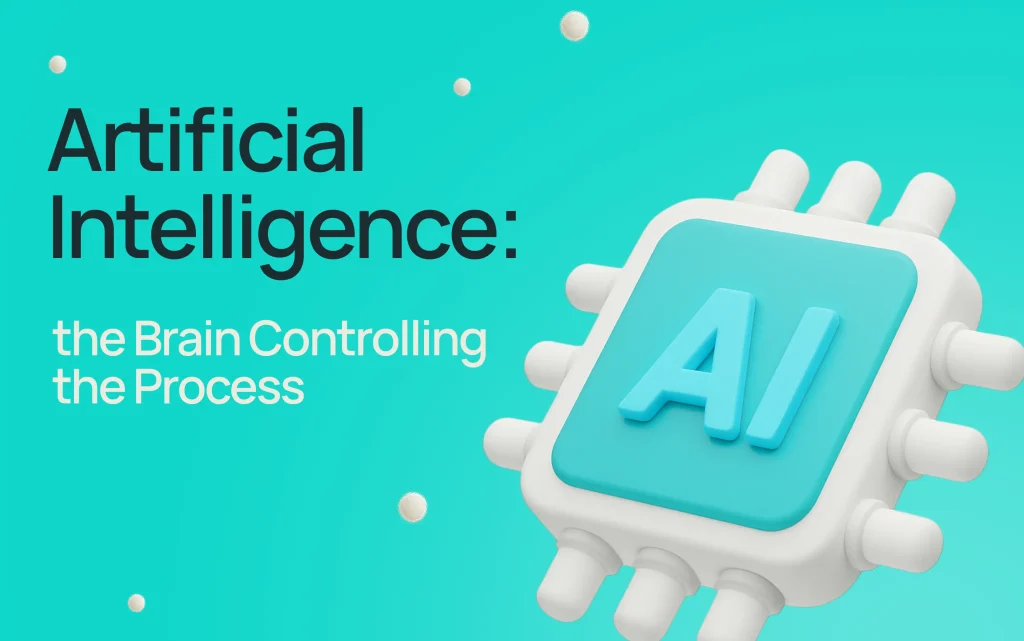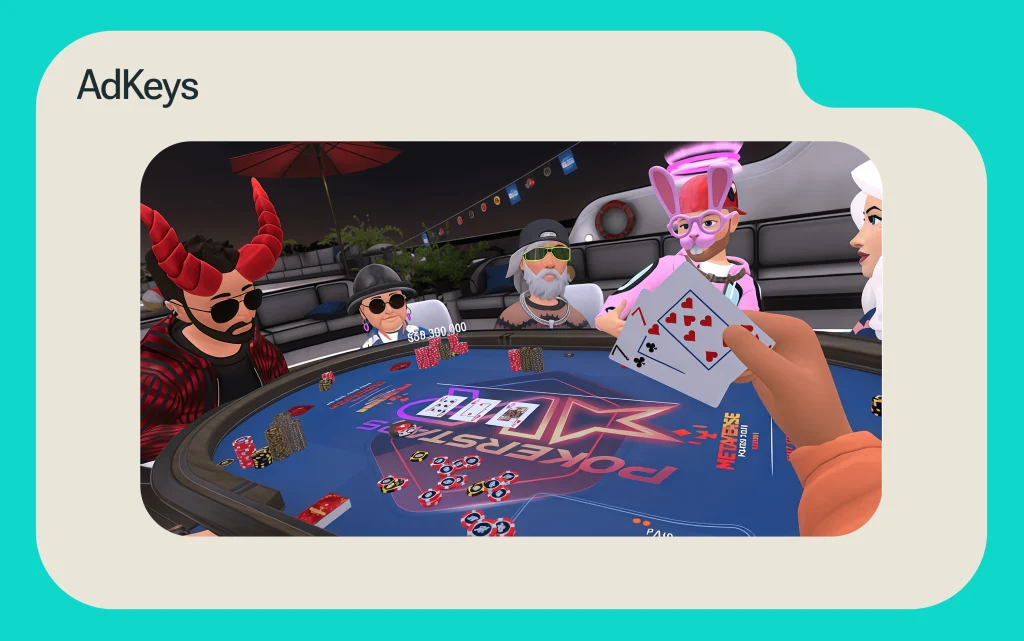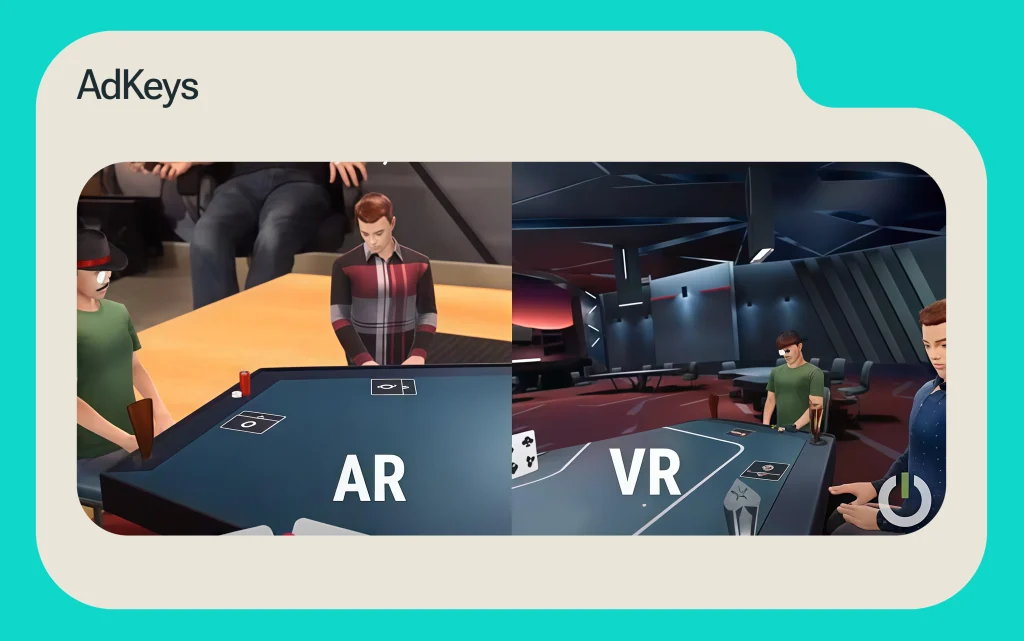Imagine: you put on a VR helmet and find yourself in a luxurious Las Vegas casino, where slots spin under your hands and match betting pops up right in the air through AR glasses. This is not a fantasy—this is the reality of 2025 iGaming, where technology is blurring the boundaries between online and offline.

Gambling and betting have always attracted excitement, emotions and the chance to catch luck. But in recent years, the iGaming market has been booming. Online gambling is projected to grow from $78.66 billion in 2024 to $153.57 billion by 2030, and betting is expected to show growth from $48.17 billion in 2024 to $88.78 billion by 2029. And it’s not just the proliferation of smartphones and high-speed internet—the introduction of technologies such as artificial intelligence (AI), virtual (VR) and augmented (AR) reality are transforming this industry into more than just roulette or slots.
These technologies are no longer just futuristic concepts, but working tools that are changing the approach to attracting and retaining players. They are making gameplay more engaging and personalized, and marketing more effective and smarter. In this article, AdKeys team will explore exactly how AI, VR and AR are changing the industry, and why it’s so important for agencies and operators looking for growth to embrace them today.
Artificial Intelligence: the Brain Controlling the Process

Imagine being able to not only predict what a player will do next, but also instantly tailor ads to their interests. AI makes this a reality by analyzing player behavior, preferences, and even mood to make the game personalized and safe.
Personalization and targeting to the max
AI has become the foundation for creating truly personalized ad campaigns. Instead of showing the same ad to everyone, AI analyzes huge amounts of data to understand each player’s behavior and preferences. For example, it can determine that a player prefers slots with a certain theme or bets on specific sports, and show them only the most relevant ads possible.
Examples:
- Future Anthem’s platform forms a dynamic home interface: “every bet, every spin is analyzed to understand the player and offer a game or bonus at the right moment”.
AI algorithms reorder sections and recommended events in sports betting: for example, a tennis fan is shown tennis matches first, at the same time a soccer fan will see a different layout.
According to research, personalized recommendations increase player engagement by 20-30%.
Forecast analytics and odds
AI algorithms can analyze huge amounts of data (team statistics, players’ form, weather conditions, even news background) to predict match outcomes with high accuracy. This allows bookmakers to set more accurate odds and identify potential “forks”. For players, this means access to deeper statistics and analytics.
Optimization and safety
For operators, AI is not only a marketing tool, but also an ally in the fight for safety and efficiency.
- Media buying automation: AI algorithms can optimize bids and ad placements in real time, ensuring your budget is spent efficiently and reaches the right audience at the right time.
- Fighting fraud: In a highly profitable industry like gambling, fraud is a huge problem. AI is helping to solve it. Machine learning models analyze player data—from behavioral biometrics to digital footprints—to identify suspicious patterns. This helps detect bots, click fraud, and multi-accounting even at the registration stage. For example, the system can detect that two accounts have logged in from the same device and IP, which could be a sign of fraud.
In betting, AI can help detect suspicious activity, such as abnormal betting patterns on specific matches (so-called match-fixing), or the use of bots for automated betting. Algorithms can analyze behavioral biometrics to help identify and block fraudulent accounts.
Responsible Gaming
AI not only helps casinos make money, it also takes care of players. Algorithms can track signs of gambling addiction by analyzing the frequency of bets, amounts and time spent in the game. They are able to identify players with signs of problem gambling at an early stage. This allows operators to contact the player in time to offer help and correct their behavior, making the game safer and more responsible.
Example:
Mindway’s GameScanner service applies neuroscientific methods to identify potential addicted players early and is able to identify at least 87% of risky and problematic behavior.
Virtual Reality (VR): Casino Like Las Vegas From the Comfort of Your Own Home
VR takes gambling to a whole new level, offering what online casinos have always lacked—atmosphere and social interaction.
100% immersion
VR casinos create an atmosphere that can’t be replicated on a regular site. Put on a helmet and you’re at the poker table, hearing the clinking of coins and chatting with other players as if you were in Las Vegas. You can walk around the virtual room, choose a table, talk to a live dealer or even play slots by spinning the reels with your hands.

By the data Mordor Intelligence, the size of the market VR in 2024 year evaluated in 12.88 billion dollars, with the forecast growth to 41.42 billion to 2029 year, and gambling will become one of the key spherical application.
Social aspect
VR is making gambling more social. In virtual casinos such as SlotsMillion, players can interact with each other, exchange lines and even organize joint tournaments.
Social and multiplayer elements in VR games greatly increase player engagement and retention. This is due to the fact that such games:
- Stimulate social interaction: players return to socialize with friends and others.
- Increase competition interest: competition and joint proximity create motivation for regular return.
- Create a sense of community: being part of a community makes the gaming experience more valuable.
VR in betting
In betting, VR can dramatically change the experience of watching sporting events and the betting process. Instead of just watching a broadcast on a screen, the user can “find themselves” in the stadium.
Example:
Before its takeover by Apple, Next VR specialized in VR broadcasts of sporting events. It partnered with the NBA, NFL, and other major sports leagues. Users could “sit” in virtual bleachers, watching the game from different angles as if they were right there in the stadium.
While NextVR wasn’t directly related to betting, the technology offers tremendous opportunities. Imagine this: you’re watching a basketball game in VR, sitting in the front row, and the odds for the next quarter pop up in front of you. You can place a bet right while watching without taking your eyes off the action. This makes the betting experience more immersive and interactive. Bookmakers create their own “virtual loge” where customers will watch the match, communicate and do betting.
VR in marketing
VR content can be more than just a product, it can also be a powerful engagement tool. For example, a VR demo that allows potential customers to “visit” a virtual casino can create a strong emotional attachment and make a brand more memorable.
Augmented Reality (AR): the Intersection of the Real and the Virtual
AR adds virtual elements to the real world. And it opens up new possibilities, both in gambling and betting. You don’t need an expensive VR helmet—all you need is a smartphone or AR glasses to turn your coffee table into a roulette table, display interactive match statistics on the wall, or lay out blackjack cards right on your kitchen table. This makes the game more dynamic and engaging.

Poker game: one player uses AR, the other VR
Example:
PokerStars has launched an AR app that allows players to stage poker matches anywhere. You point your smartphone at a table and a virtual poker table with cards and chips appears in front of you. Players can see each other as avatars and chat in real time. This is a great example of how AR is making gambling mobile and interactive.
Interactive Advertising
AR doesn’t immerse you in a new world, but rather overlays digital elements on the real world using a smartphone or other devices. This opens up interesting possibilities for creating interactive marketing campaigns.
- Advertising creatives: AR advertising allows brands to turn ordinary objects into interactive touchpoints. For example, a sports betting ad on bar coasters might contain a QR code, the scanning of which activates a mini-game or an exclusive in-app promotion. Or an advertising poster with the face of a famous sportsman, which “comes to life” on the smartphone screen when you point it, tells about current promotions and offers to place a bet on the next match.
- Social filters: In social networks AR-filters become a viral tool. For example, a brand can create an AR filter with a player’s helmet or other game elements so that users can interact with it and share content, which increases brand awareness.
Example:
A campaign for the movie “Dune: Part Two” used an AR filter that placed a holographic helmet over the user’s face and asked questions, and at the end assigned a personalized call sign. Users were eager to share selfies, which not only increased engagement, but also led to increased ticket sales.
Synergy Between Technology and Marketing
The best results are achieved when these technologies work together. AI improves retention and campaign effectiveness, VR and AR increase engagement and create a unique UX.
New marketing models are emerging: VR ad campaigns, interactive stories, virtual casino tours, and personalized bonus offers.
Working together, they create an interesting and seamless user journey that starts with ad creative and ends with deep product engagement.
Challenges and Potential
Despite all the pros, there are still a number of challenges.
Barriers to adoption
- The high cost of developing VR/AR environments, expensive hardware and the need for powerful software limit accessibility.
- VR devices are still bulky and expensive, AR requires modern smartphones—not all users have access.
Ethical and regulatory complexities
- Deep personalization (e.g., dynamic slots with real-time content generation) can exacerbate dependencies and ethical risks.
- Privacy issues: AI collects a lot of data about player behavior, and it is important that this information is protected.
But the future looks promising. The falling cost of VR headsets and the development of 5G will make these technologies more affordable. AI will continue to improve personalization. Integration with the meta universe, blockchain, and AI dealers could all become the new standard of iGaming. In the next 3-5 years, gambling will become even more interactive, social and secure, and companies investing in these technologies now will gain a competitive advantage in the future.
"AI, VR and AR are not just trends, but new iGaming standards that create a wow effect and change the interaction with players. These technologies are helping to create something new: from smart ads that hit exactly the right target to a fully immersive virtual casino experience. Whoever grasps and masters these technologies first will get the colossal competitive advantage".
Alyona Borovko, Marketing Manager
